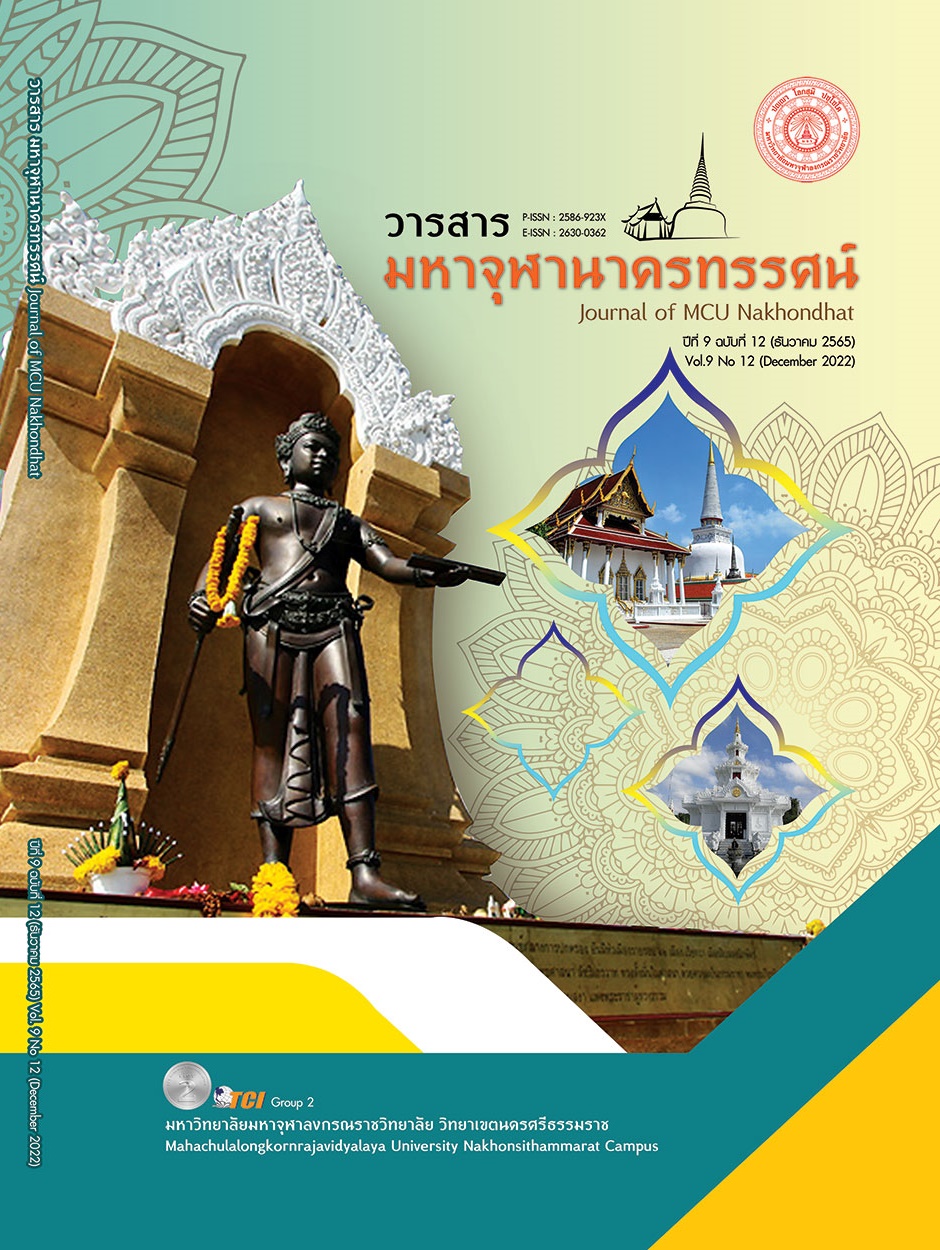THE RESULTS OF THE DEVELOPMENT OF CARING MODEL FOR END OF LIFE PATIENTS IN THE COMMUNITY
Main Article Content
Abstract
End-stage patients need continued palliative care, especially in communities where the care model is unclear. Which this research aims to develop and study the effect of the community care model for End of Life patients. The samples were caregivers and patients who were treated at Maharaj Hospital Nakhon Si Thammarat who have been diagnosed by a doctor in the late stage to provide palliative care and relatives or doctors to return to care at home during July 2020 to August 2021, with a score of 50 percent or less according to the Suan Dok Palliative Care Patient Assessment Scale. This study is an action research was divided into 3 phases: 1) Preparing the caregivers at home, consisting of 1) patient assessment methods 2) knowledge about disease and care and 3) training on skills in managing non - symptoms, 4) condition - based care, 5) coordination, and 6) evaluation, 2) Conducting four home visits every 2 weeks, and 3) Evaluation by palliative care outcome scale in patients and care givers. The data were analyzed using descriptive statistics such as percentage, mean and standard deviation. and data analysis before and after with Pair T test statistics. The palliative model was assessed before and after care.The results showed that; A sample of 35 people received care according to the end-stage care model. It was found that the mean of patient care knowledge increased from 7.74 (SD. 2.92) to 15.49 (SD. 0.71). Palliative care outcomes Patients decreased from 23.69 (SD. 4.09) to 5.74 (SD. 1.67), which was a statistically significant improvement (P-Value < 0.000). Patient and relative satisfaction was at the highest level at 46.72. (SD. 1.85) and suffering with reduced symptoms in all symptoms. Therefore, it was concluded that the development of pediatric care models in the community resulted in better palliative care.
Article Details

This work is licensed under a Creative Commons Attribution-NonCommercial-NoDerivatives 4.0 International License.
References
กรมการแพทย์ กระทรวงสาธารณสุข. (2557). แนวทางการดูแลผู้ป่วยระยะสุดท้าย. กรุงเทพมหานคร: สำนักงานกิจการโรงพิมพ์ องค์การสงเคราะห์ทหารผ่านศึก ในพระบรมราชูปถัมภ์.
กิตติกร นิลมานัต และคณะ. (2561). ผลของโปรแกรมการพยาบาลจัดการรายกรณีสำหรับผู้ป่วยระยะท้ายต่อความทุกข์ทรมานจากอาการและการรับรู้คุณภาพการดูแลของผู้ป่วยระยะท้าย. วารสารสภาการพยาบาล, 33(3), 51-66.
จอนผะจง เพ็งจาด. (2557). บทบาทพยาบาลในการดูแลแบบประคับประคอง. วารสารวิทยาลัยพยาบาลบรมราชชนนี กรุงเทพ, 30(1), 100-107.
ช่อทิพย์ พรหมมารัตน์. (2560). ผลของการพัฒนารูปแบบการดูแลแบบประคับประคองที่บ้านเครือข่ายสุขภาพอำเภอบ้านโฮ่ง จังหวัดลำพูน. วารสารสาธารณสุขล้านนา, 13(1), 25-36.
ชุติกาญจน์ หฤทัย และคณะ. (2559). ระบบบริการพยาบาลแบบประคับประคอง. ประทุมธานี: สำนักพิมพ์สื่อตะวันจำกัด.
ธีรพร สถิรอังกูร และคณะ. (2561). แนวทางการพัฒนาระบบบริการพยาบาล : Service Plan. ประทุมธานี: สำนักพิมพ์สื่อตะวันจำกัด.
นุชจรินทร์ ไชยสัจ. (2561). ผลของการเตรียมความพร้อมของผู้ดูแลต่อการปรับตัวในการดูแลผู้ป่วยระยะสุดท้ายในชุมชน. วารสารโรงพยาบาลมหาสารคาม, 15(3), 45-54.
ปิยาวรรณ โภคพลากร. (2560). รูปแบบการดูแลผู้ป่วยแบบประคับประคองในประเทศไทย. วารสารพยาบาล กระทรวงสาธารณสุข, 26(3), 40-51.
ศรีเวียง ไพโรจน์กุล. (2553). เกณฑ์การวินิจฉัยผู้ป่วยระยะสุดท้าย. ขอนแก่น: คณะแพทยศาสตร์ มหาวิทยาลัยขอนแก่น.
สันต์ หัตถีรัตน์. (2559). วาระสุดท้ายที่งดงาม. กรุงเทพมหานคร: บริษัทสำนักพิมพ์หมอชาวบ้าน จำกัด.
สุรีพร ศิริยะพันธุ์ และคณะ. (2564). การพัฒนารูปแบบการดูแลประคับประคองสำหรับผู้ปาวยโรคไตเรื้อรังที่ ไม่ได้บำบัดทดแทนไตในโรงพยาบาลยะลา. วารสารสาธารณสุขและวิทยาศาสตร์สุขภาพ, 4(2), 1-15.


